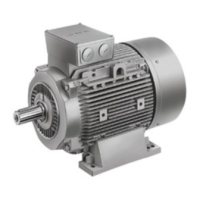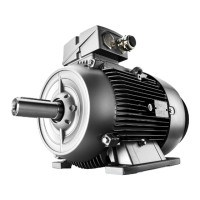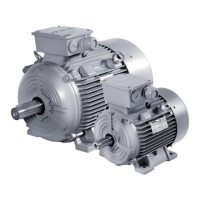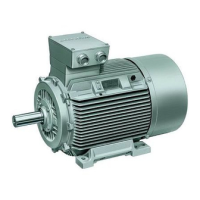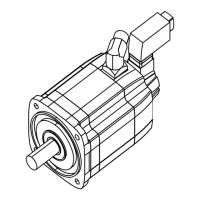WARNING
Dangerous voltage via the converter
As long as the feeding converter is switched on, or the DC link of the converter is not
discharged, there can be a voltage at the motor terminals even when the rotor is not moving.
The voltage is up to 1000 V, depending on the converter type.
Ensure that the five safety rules (Page 15) are followed before working on the motor.
6.5.5.2 Maximum peak voltage at the motor terminals
The maximum peak voltage values at the motor terminals are listed in the table as limit values
for the insulation system:
Table 6-7 Maximum peak voltage at the motor terminals
Rated motor voltage [V] Maximum peak voltage at the motor terminals Û
max
Conductor - conductor Conductor - ground DC link
≤ 500 V 1500 V
Rise time 0.5 μs
1100 V
Rise time 0.5 μs
750 V
> 500 to 690 V 2250 V
Rise time 0.4 μs
1500 V
Rise time 0.4 μs
1125 V
NOTICE
Insulation damage caused by cable reflections
Cable reflections can double the voltage load at the motor or at the terminals. This can
damage the insulation system and result in complete destruction of the machine.
6.5.5.3 Reducing bearing currents
Taking the following actions will reduce the bearing currents:
● Ensure that the contacts are established over a large area. Solid copper cables are not
suitable for high frequency grounding because of the skin effect.
Equipotential bonding conductors:
Use equipotential bonding conductors:
● Between motor and driven machine
● Between motor and converter
● Between the terminal box and the RF grounding point at the motor enclosure.
Electrical connection
6.5 Connecting the auxiliary circuits
SIMOTICS TN Series N-compact 1LA8
78 Operating Instructions 05/2016
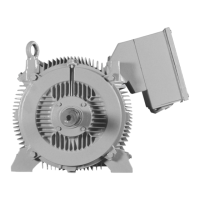
